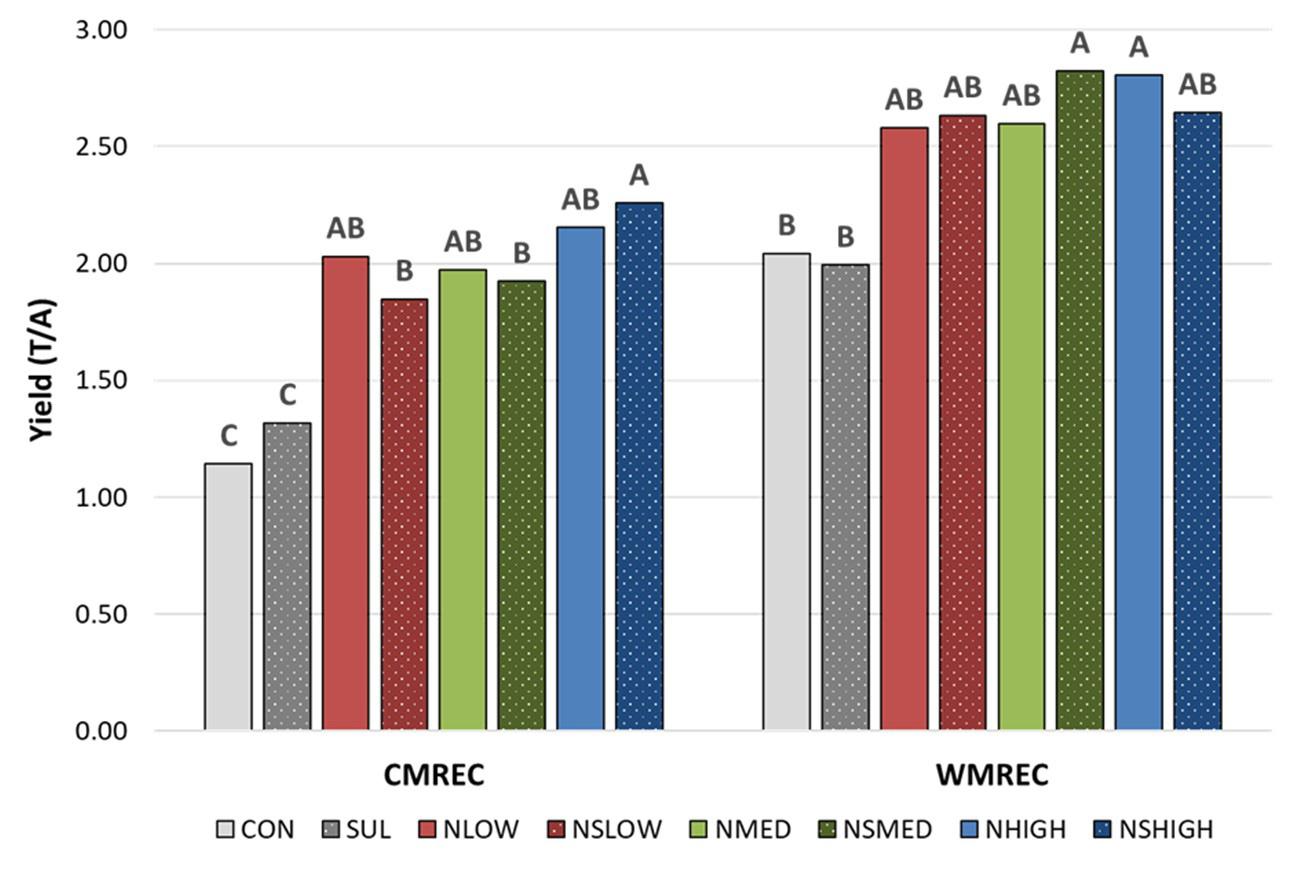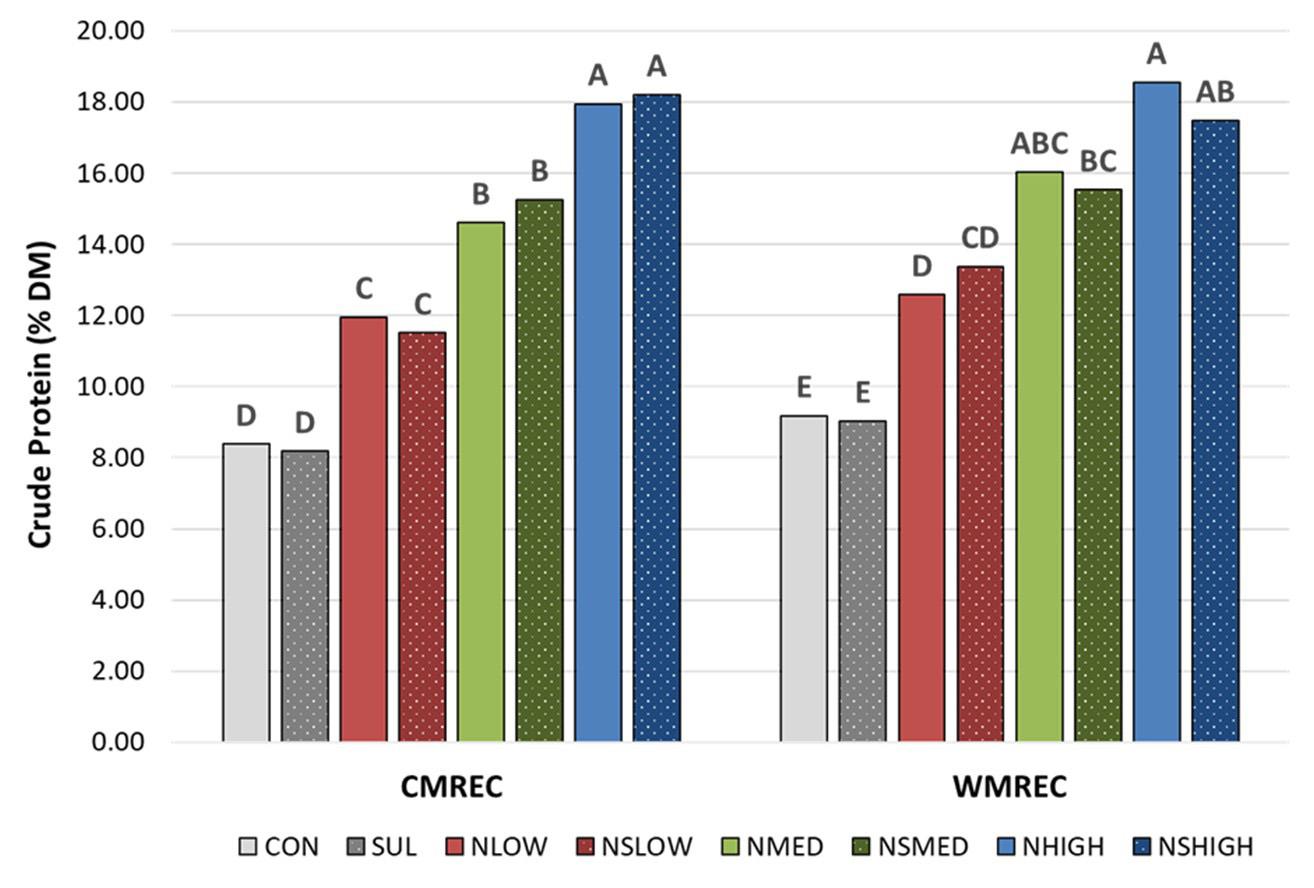Research Update: Effect of Soil Fertility on Triticale Yield and Quality

Figure 1. Harvesting triticale forage plots in Keedysville, MD on April 26, 2021.
Many producers recognize the value of winter forages, such as triticale, as a high-yielding and high quality forage for feeding livestock. The yield potential for winter forages is largely based on planting date and fall nitrogen availability; these two critical factors determine the number of fall tillers, which sets the yield potential for the following spring. Winter forages like triticale can also serve as a high quality forage source and can be a good source of protein, potentially making them a more economical alternative to other feed ingredients such as soybean meal for meeting ration protein needs.
It has been well established that nitrogen fertility can influence forage protein concentrations, but nutrient management regulations can limit nitrogen application rates due to the potential for nutrient leaching and runoff. Although this concern is valid, research from other states and preliminary research by our team in Maryland using higher nitrogen rates, has shown promise that triticale can take up additional nitrogen without increasing leaching losses.
The objectives of this study are to investigate the effect of increasing nitrogen fertility rates with and without sulfur on triticale forage to determine 1) the effects on forage yield, 2) if using a higher fertilization rate will the increase the value of the forage through increased protein concentrations, and 3) the resulting implications of incorporating that forage into the ration for lactating dairy cattle. The research will include an initial field trial to assess soil nutrient status, forage quality, and forage yield under varying nitrogen and sulfur fertility treatments. This will be followed by a feeding study to assess dairy cow milk production and performance when fed the resulting forage, and then finally, an economic analysis to assess the effectiveness of the system.
“...additional nitrogen fertility can influence forage protein concentrations and triticale can take up additional nitrogen without increasing leaching losses.“
FOCAL POINT
|
Methods
In the fall of 2020, triticale was established in replicated fields at both the Central (Clarksville) and Western (Keedysville) Maryland Research and Education Centers. Fertility treatments included increasing levels of nitrogen with and without the addition of sulfur (Table 1). Fertility treatments were applied in March 2021, and soil nitrate samples were collected before and after fertilizer application to test for potential losses from nitrate leaching. Triticale plots were harvested when forage reached the boot stage on April 26 and April 27 at Keedysville and Clarksville, respectively. At both locations, plots were harvested mechanically using a forage harvester (Figure 1). Harvested forage was weighed for yield determination and samples were taken for forage quality analysis.
| TABLE 1. TREATMENT DESCRIPTIONS | ||
|---|---|---|
| Treatment | Nitrogen (lb) | Sulfur (lb) |
| CON | 0 | 0 |
| SUL | 0 | 15 |
| NLOW | 50 | 0 |
| NSLOW | 50 | 15 |
| NMED | 100 | 0 |
| NSMED | 100 | 15 |
| NHIGH | 150 | 0 |
| NSHIGH | 150 | 15 |
Results
Forage yields for the fertility treatments that included nitrogen were similar but were increased compared to the CON and SUL control treatments (Figure 2). This pattern held true at each location, with yields averaging 2.0 T/A at Clarksville and 2.7 T/A at Keedysville.


At both locations, forage crude protein (CP) concentrations were lowest for the CON and SUL treatments (average 8.7% CP) and increased with increasing fertility, with the NHIGH and NSHIGH treatments containing the greatest amount of protein (average 18% CP; Figure 3). Across all fertility treatments, the addition of sulfur did not further increase forage CP concentrations, likely because fields were not limiting in sulfur prior to this experiment.
Neutral detergent fiber concentrations did not differ between fertility treatments at either location, averaging 51% across all locations and treatments. Similarly, total digestible nutrients did not differ between fertility treatments at either location, averaging 65% across all locations and treatments.
At both locations, nitrate concentrations in soil samples taken both pre-and post-fertilizer application remained minimal, indicating no additional nitrogen losses due to leaching.
Conclusions
Overall, these preliminary results indicate that additional nitrogen fertility can influence forage protein concentrations, and that triticale can take up additional nitrogen without increasing leaching losses.
Future Plans
At the Clarksville location, triticale with similar fertility treatments (low, moderate, and high nitrogen) was also planted on a larger field scale, harvested, and ensiled using Ag bags. This forage is currently being used for a feeding study happening this fall. Dietary treatments include triticale silage grown under low, moderate, and high nitrogen fertility compared to a control ration made up of a corn silage/alfalfa base; for the triticale dietary treatments, triticale silage is being included in the ration at 30% DM. The goal of this feeding study is to test the effects of triticale incorporation on feed intake, milk production, milk components, and health parameters when included in the diet of lactating dairy cows.
Following this feeding study, an economic comparison of the cost of meeting ration protein needs through increased soil fertility (i.e. increased triticale protein concentrations) versus through traditional sources such as soybean meal or alfalfa will also be completed. The entire study will also be repeated with similar methodology in 2022.
This article appears in the September 22, 2021, Volume 2, Issue 3 of the Maryland Milk Moo's newsletter and on the November 2021, Volume 12, Issue 8 of the Agronomy news.
Maryland Milk Moo's, September 22, 2021, Vol.2, Issue 3
Maryland Milk Moos is a quarterly newsletter published by the University of Maryland Extension that focuses on dairy topics related to Nutrition and Production, Herd Management, and Forage Production. To subscribe to this newsletter, click the button below to enter your contact information.
Agronomy News, November 2021, Vol. 12, Issue 8
Agronomy News is a statewide newsletter for farmers, consultants, researchers, and educators interested in grain and row crop forage production systems. This newsletter is published once a month during the growing season and will include topics pertinent to agronomic crop production. Subscribers will receive an email with the latest edition.
Subscribe
 English
English العربية
العربية Български
Български 简体中文
简体中文 繁體中文
繁體中文 Hrvatski
Hrvatski Čeština
Čeština Dansk
Dansk Nederlands
Nederlands Suomi
Suomi Français
Français Deutsch
Deutsch Ελληνικά
Ελληνικά हिन्दी
हिन्दी Italiano
Italiano 日本語
日本語 한국어
한국어 Norsk bokmål
Norsk bokmål Polski
Polski Português
Português Română
Română Русский
Русский Español
Español Svenska
Svenska Català
Català Filipino
Filipino עִבְרִית
עִבְרִית Bahasa Indonesia
Bahasa Indonesia Latviešu valoda
Latviešu valoda Lietuvių kalba
Lietuvių kalba Српски језик
Српски језик Slovenčina
Slovenčina Slovenščina
Slovenščina Українська
Українська Tiếng Việt
Tiếng Việt Shqip
Shqip Eesti
Eesti Galego
Galego Magyar
Magyar Maltese
Maltese ไทย
ไทย Türkçe
Türkçe فارسی
فارسی Afrikaans
Afrikaans Bahasa Melayu
Bahasa Melayu Kiswahili
Kiswahili Gaeilge
Gaeilge Cymraeg
Cymraeg Беларуская мова
Беларуская мова Íslenska
Íslenska Македонски јазик
Македонски јазик יידיש
יידיש Հայերեն
Հայերեն Azərbaycan dili
Azərbaycan dili Euskara
Euskara ქართული
ქართული Kreyol ayisyen
Kreyol ayisyen اردو
اردو বাংলা
বাংলা Bosanski
Bosanski Cebuano
Cebuano Esperanto
Esperanto ગુજરાતી
ગુજરાતી Harshen Hausa
Harshen Hausa Hmong
Hmong Igbo
Igbo Basa Jawa
Basa Jawa ಕನ್ನಡ
ಕನ್ನಡ ភាសាខ្មែរ
ភាសាខ្មែរ ພາສາລາວ
ພາສາລາວ Latin
Latin Te Reo Māori
Te Reo Māori मराठी
मराठी Монгол
Монгол नेपाली
नेपाली ਪੰਜਾਬੀ
ਪੰਜਾਬੀ Afsoomaali
Afsoomaali தமிழ்
தமிழ் తెలుగు
తెలుగు Yorùbá
Yorùbá Zulu
Zulu ဗမာစာ
ဗမာစာ Chichewa
Chichewa Қазақ тілі
Қазақ тілі Malagasy
Malagasy മലയാളം
മലയാളം සිංහල
සිංහල Sesotho
Sesotho Basa Sunda
Basa Sunda Тоҷикӣ
Тоҷикӣ O‘zbekcha
O‘zbekcha አማርኛ
አማርኛ Corsu
Corsu Ōlelo Hawaiʻi
Ōlelo Hawaiʻi كوردی
كوردی Кыргызча
Кыргызча Lëtzebuergesch
Lëtzebuergesch پښتو
پښتو Samoan
Samoan Gàidhlig
Gàidhlig Shona
Shona سنڌي
سنڌي Frysk
Frysk isiXhosa
isiXhosa